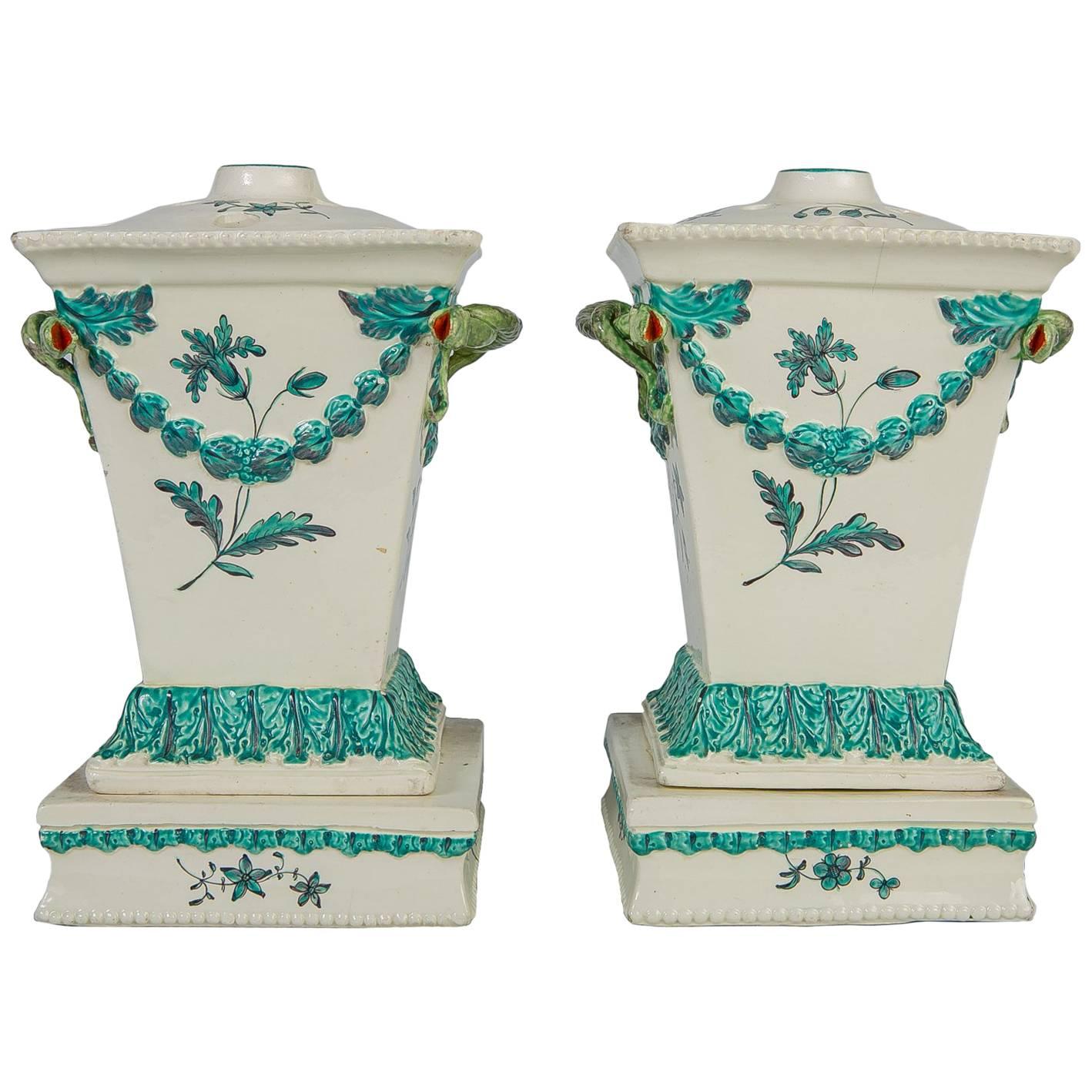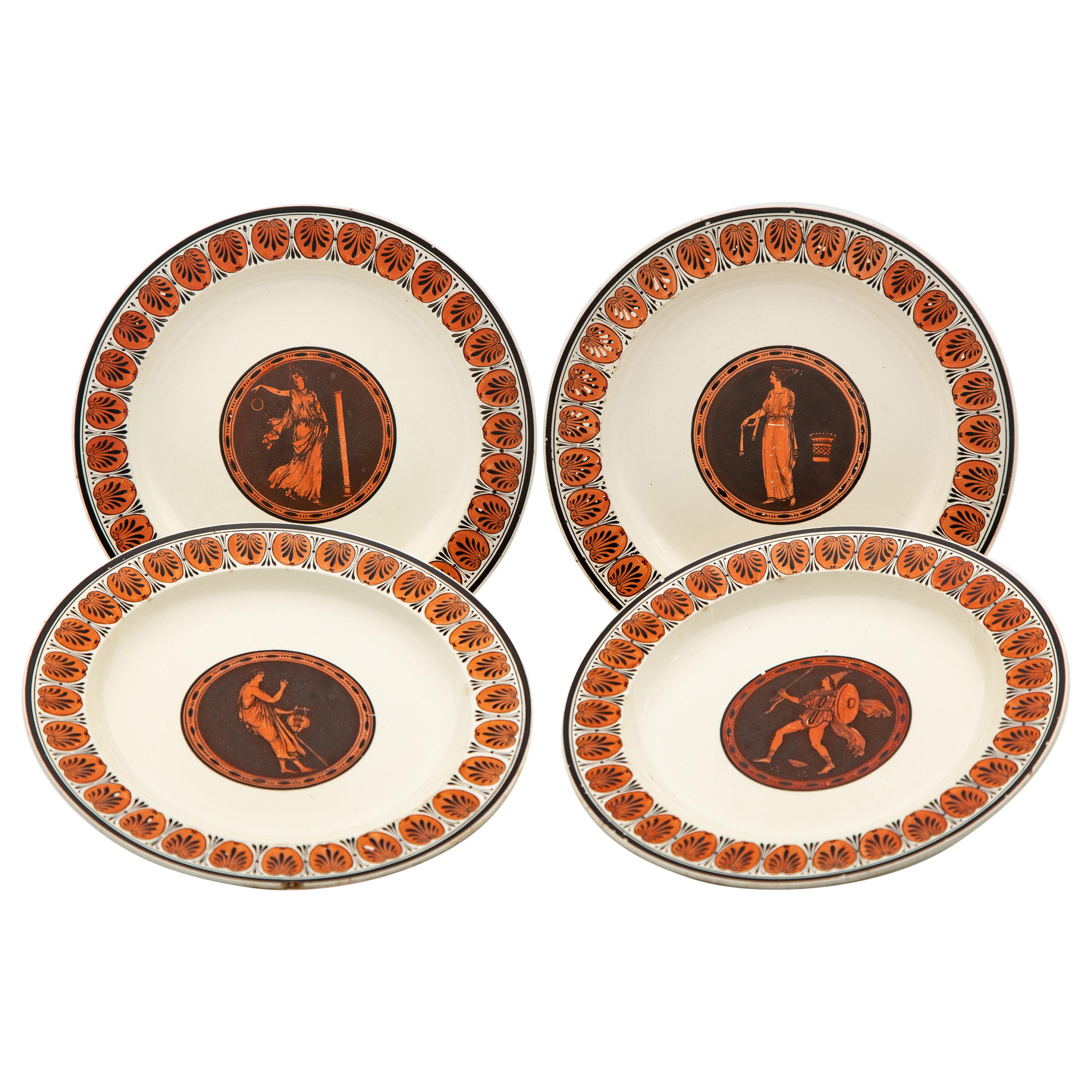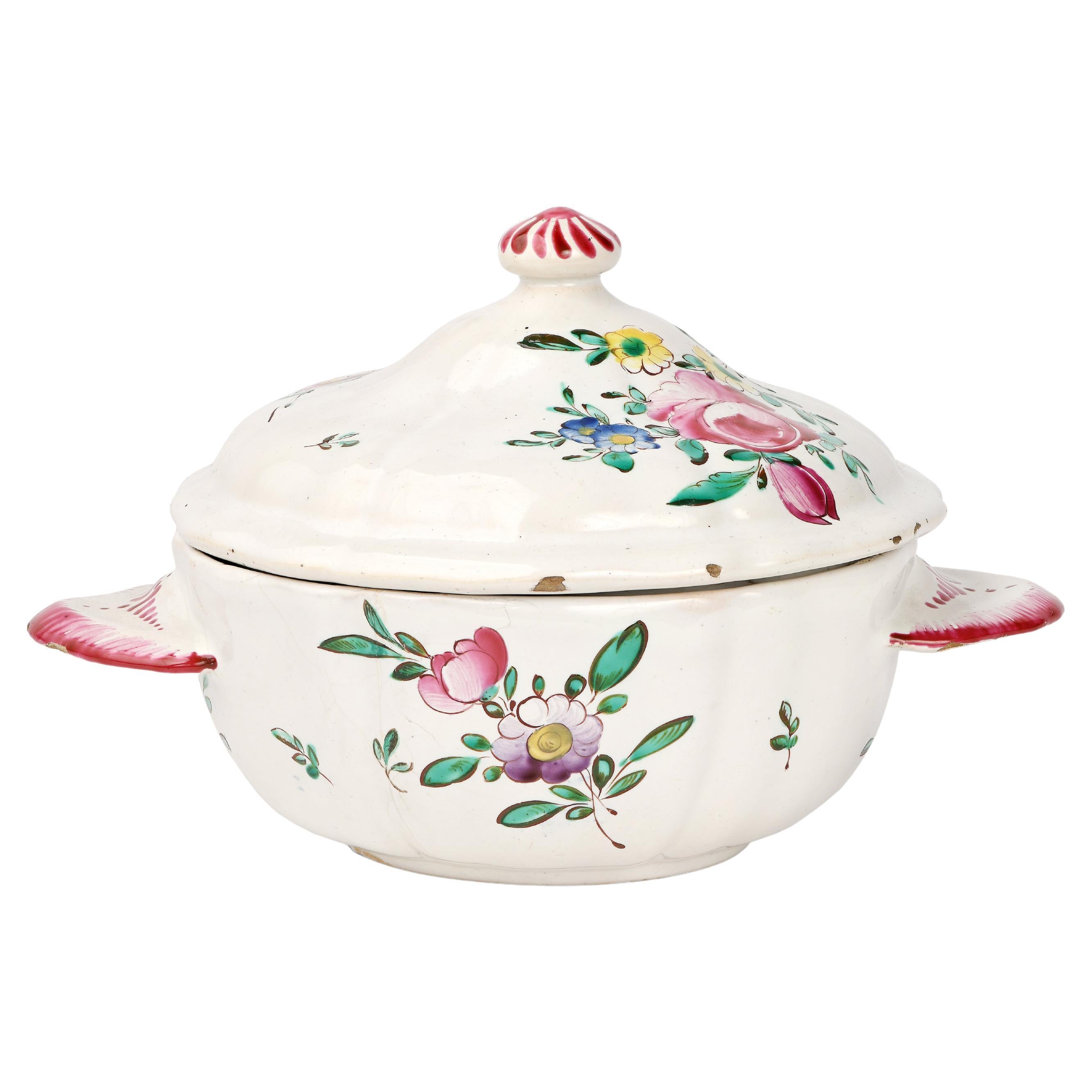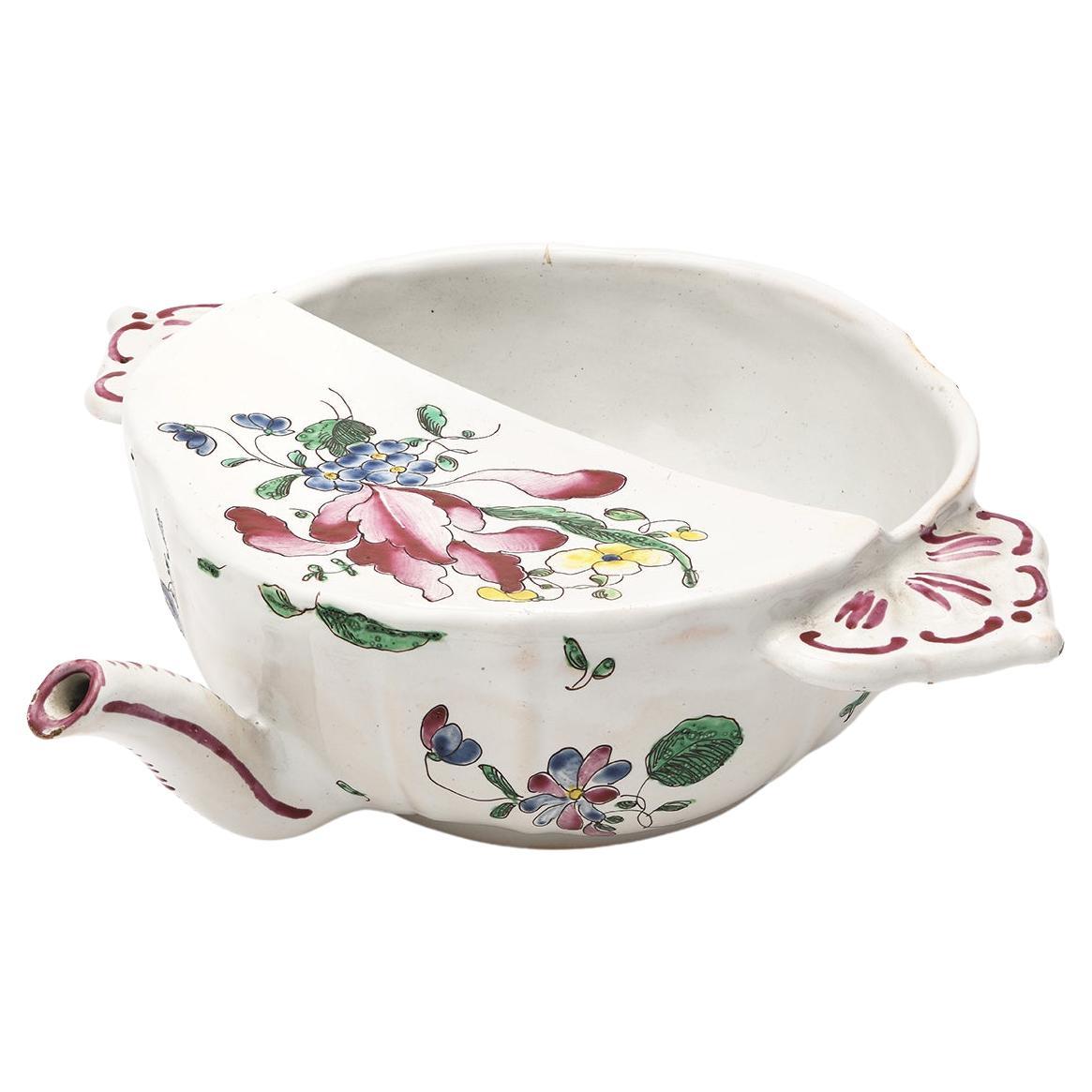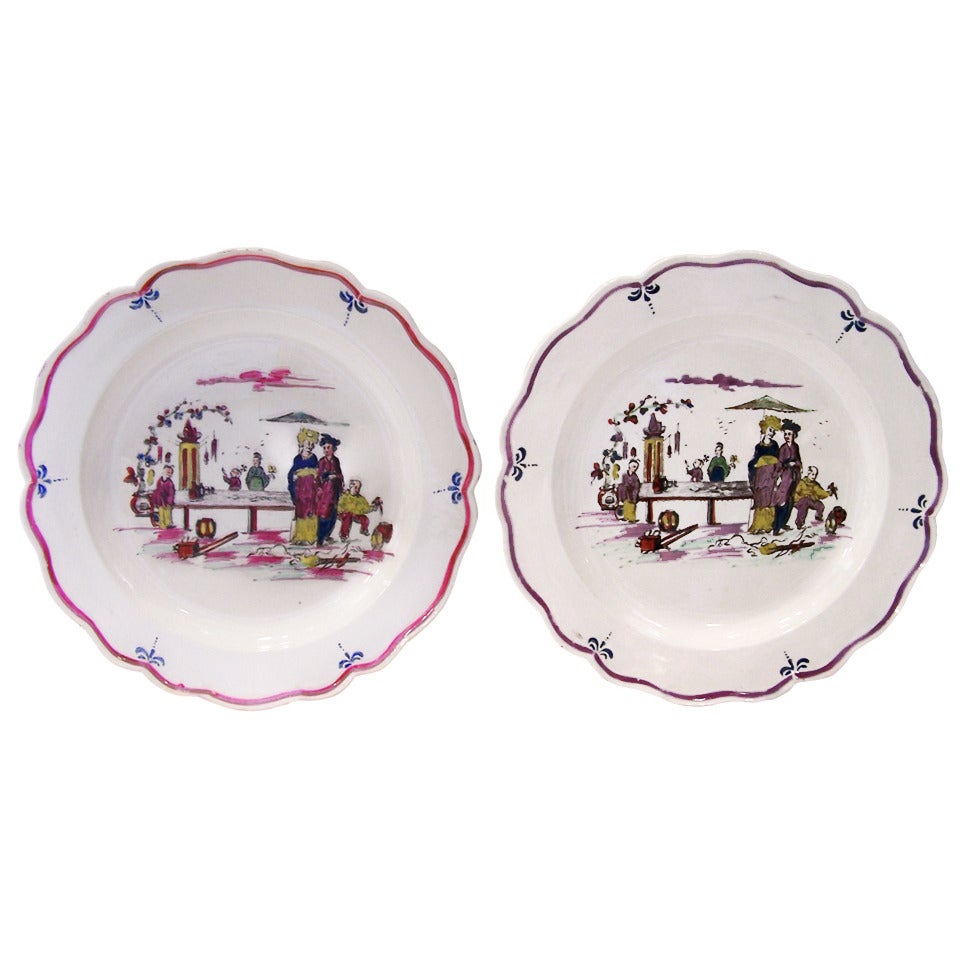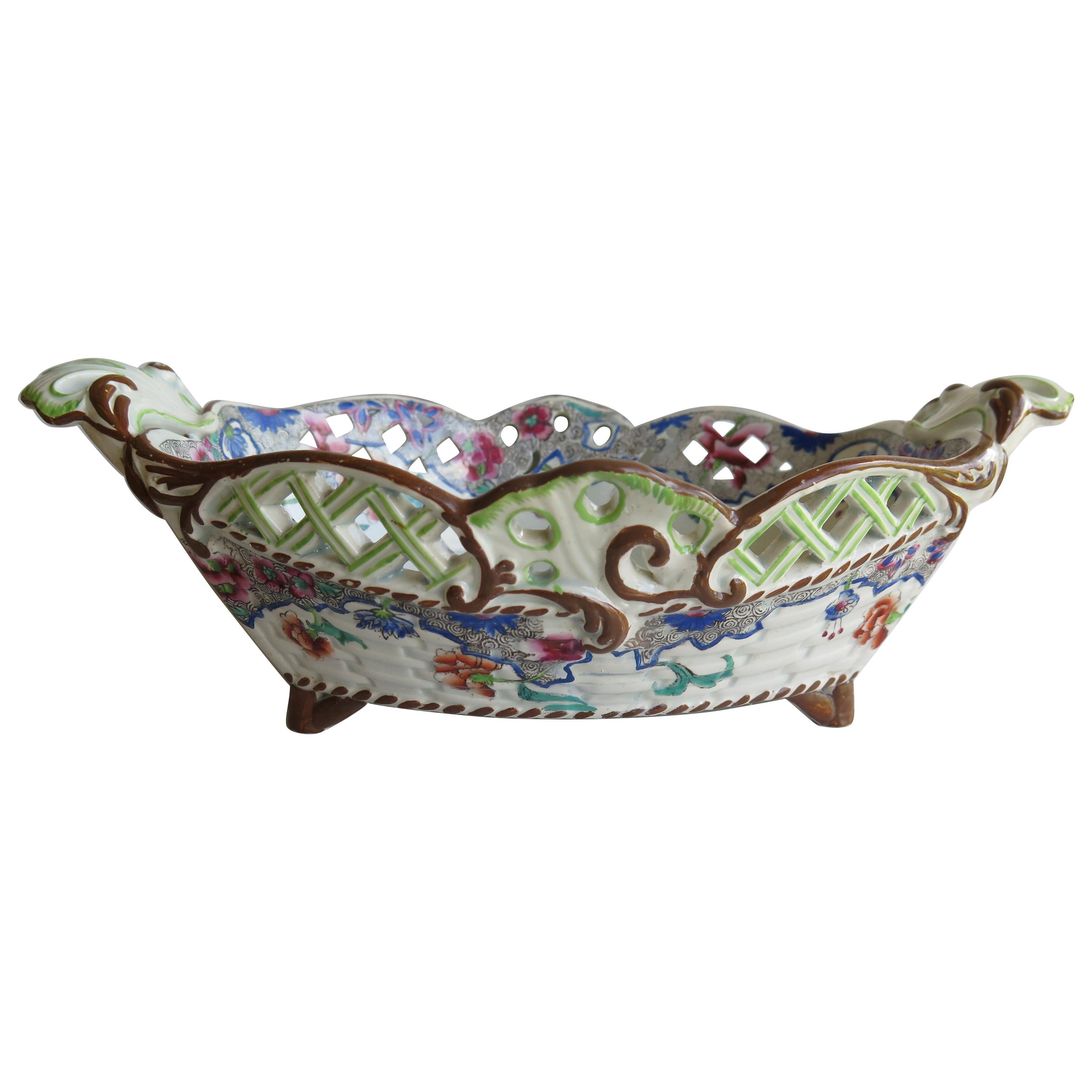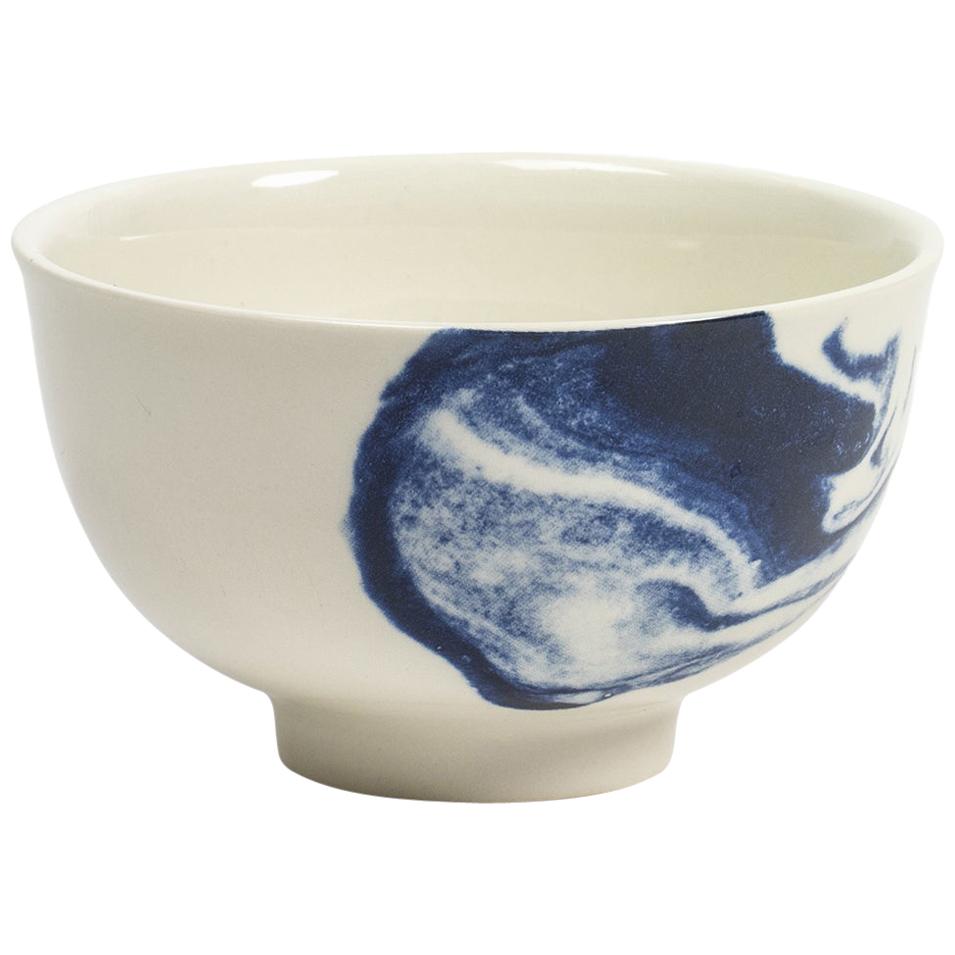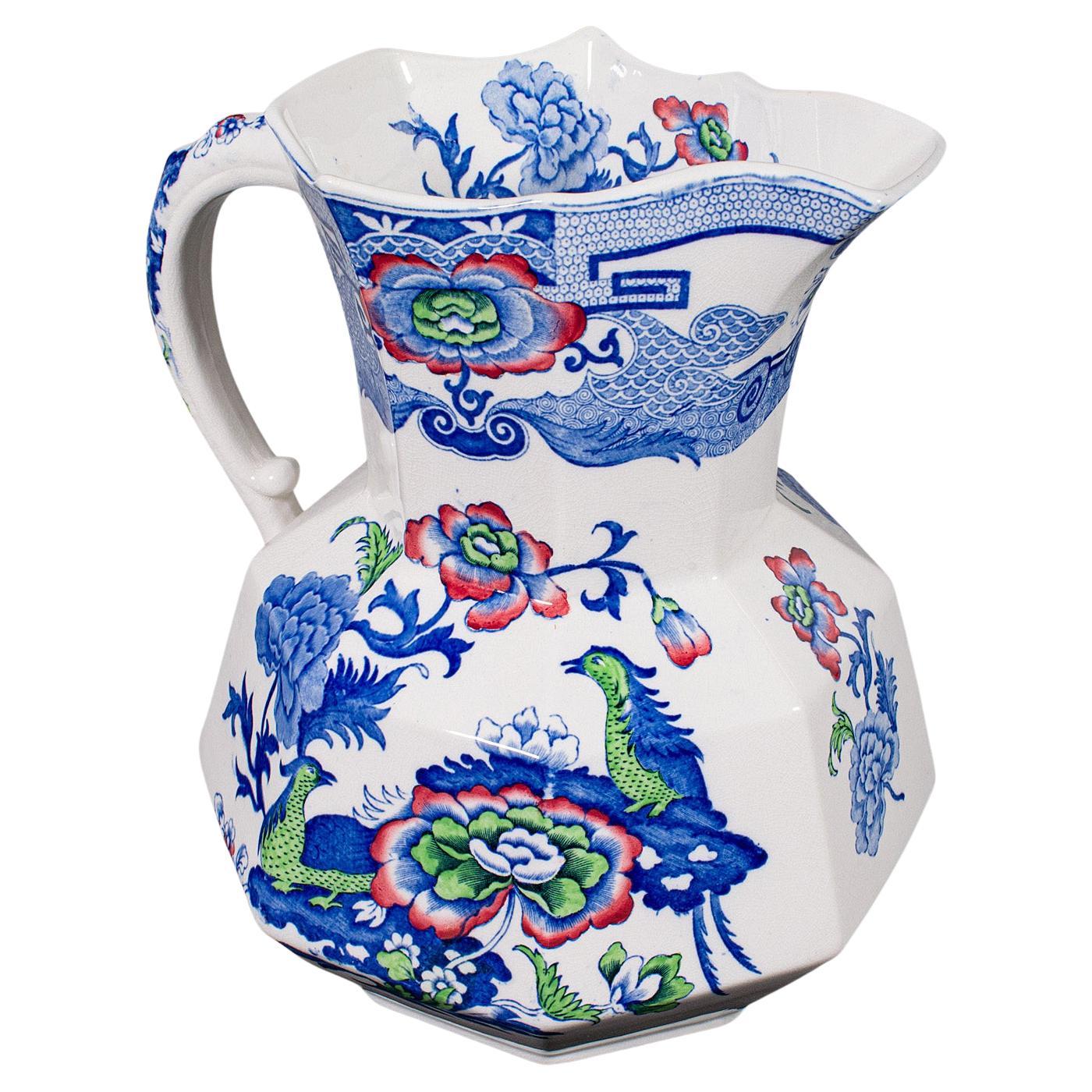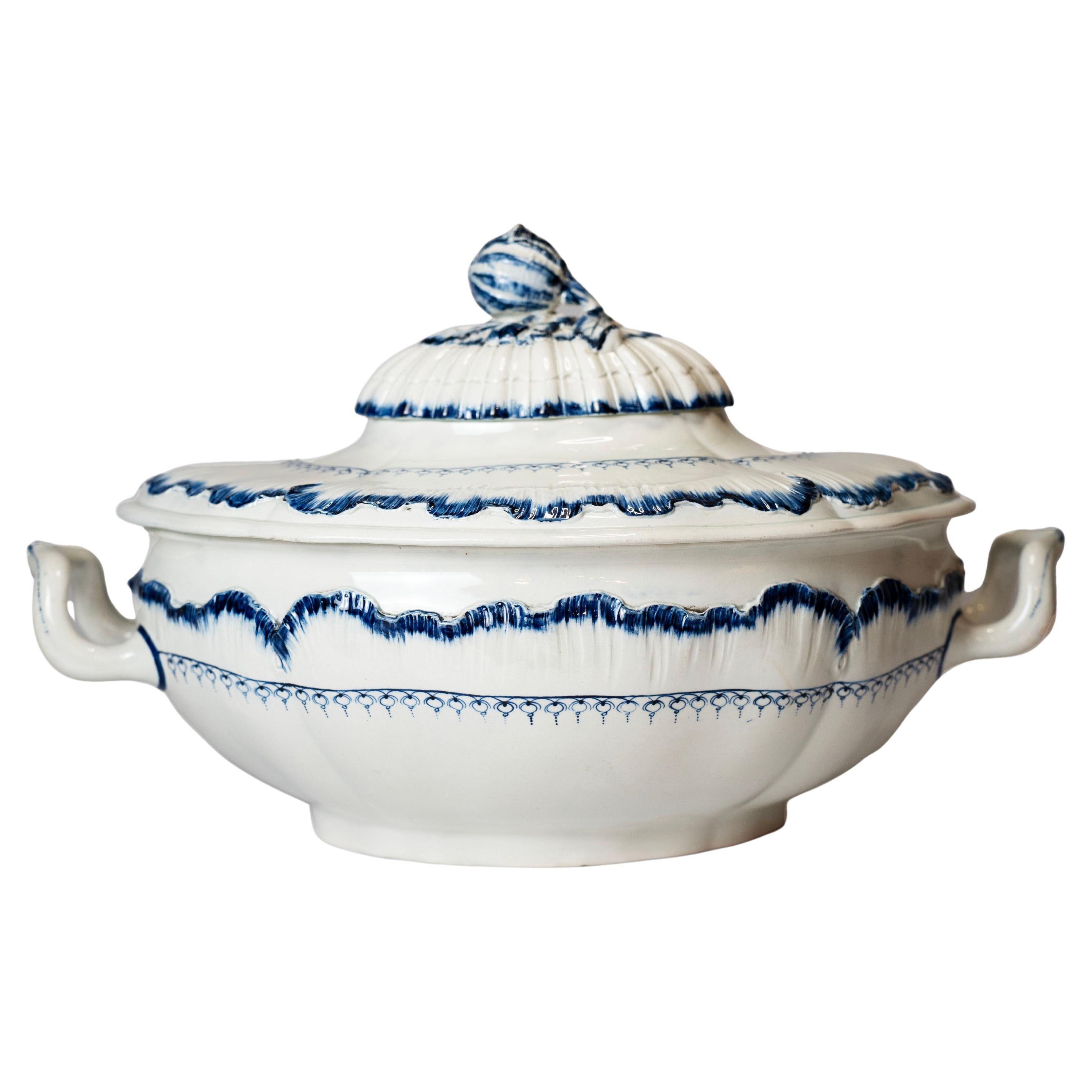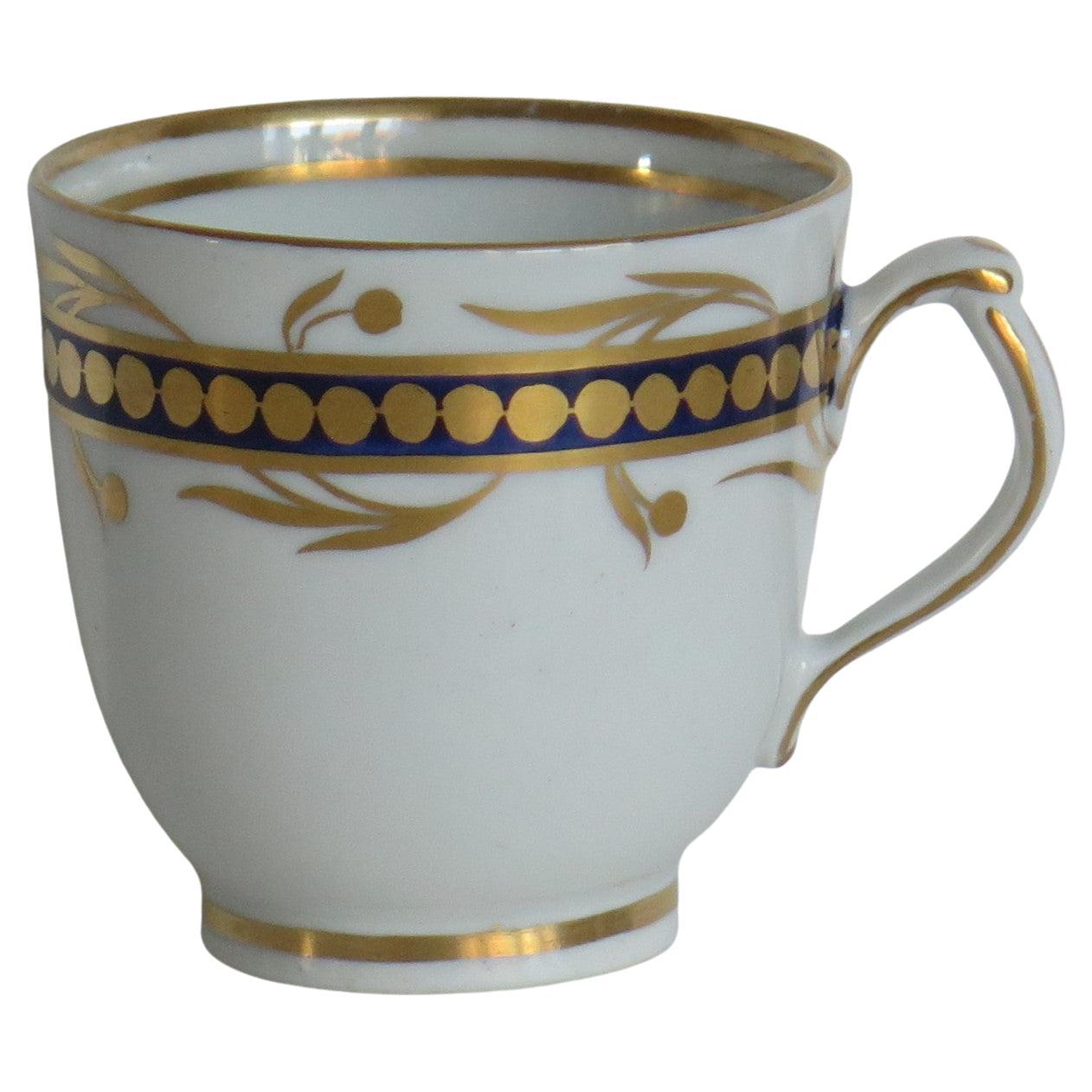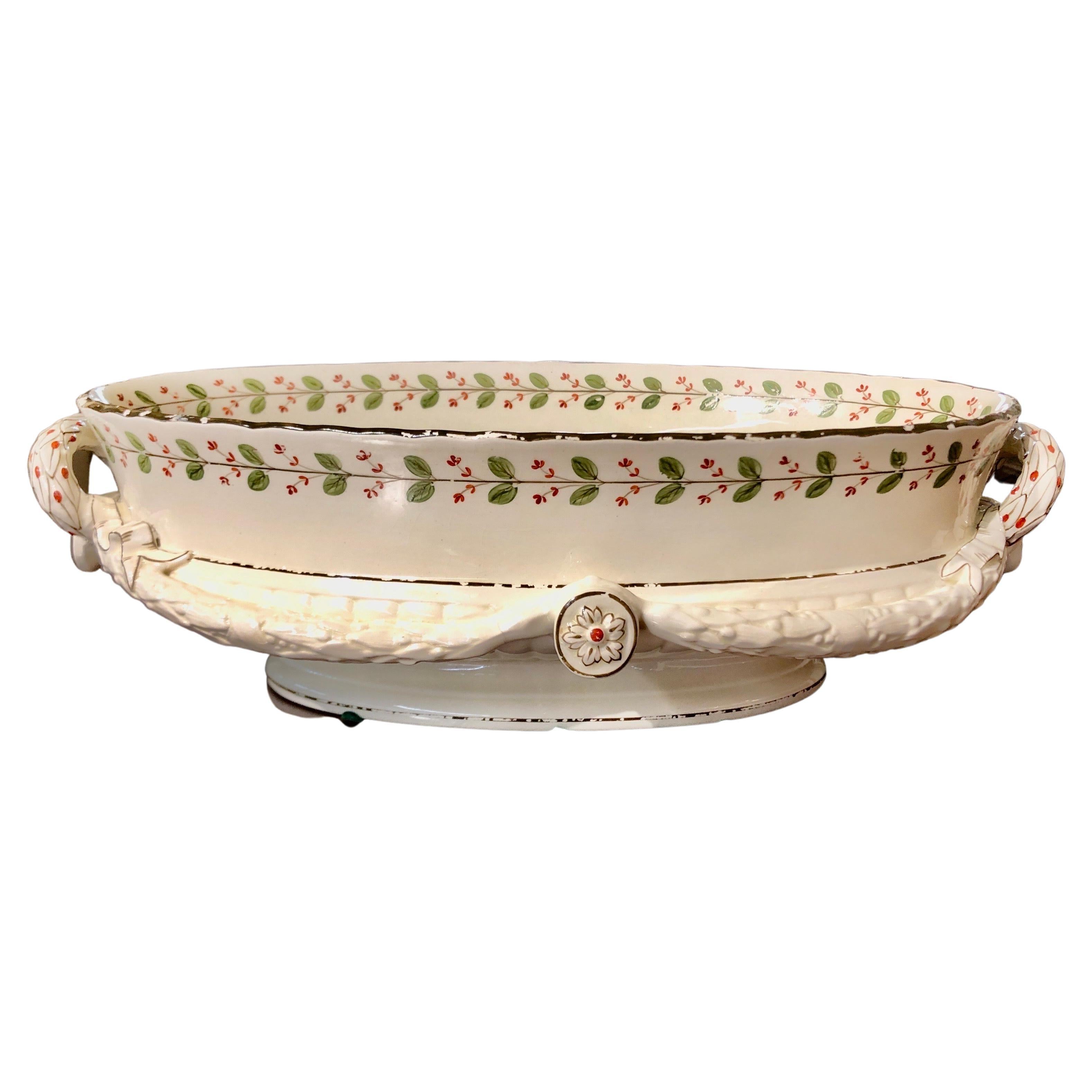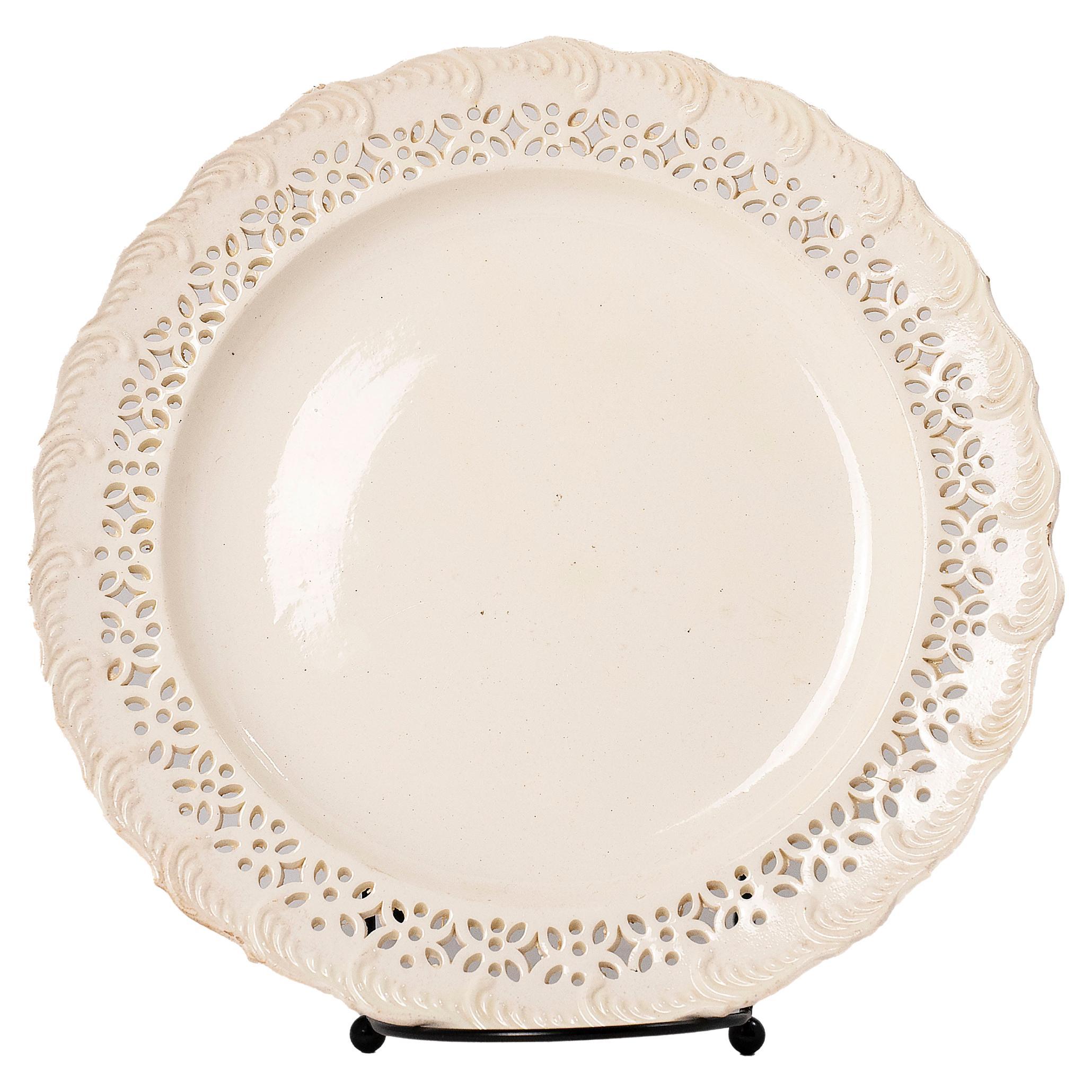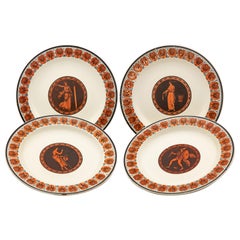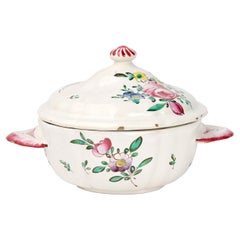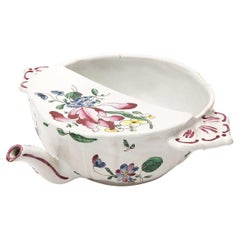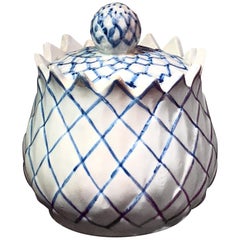
English Creamware ‘Artichoke’ Custard Cup, Blue Details, circa 1780
View Similar Items
1 of 5
English Creamware ‘Artichoke’ Custard Cup, Blue Details, circa 1780
About the Item
- Dimensions:Height: 3.15 in (8 cm)Diameter: 2.76 in (7 cm)
- Place of Origin:
- Period:1780-1789
- Date of Manufacture:circa 1780
- Condition:Wear consistent with age and use. 3 small chips to spike ends restored, otherwise excellent.
- Seller Location:Geelong, AU
- Reference Number:Seller: 10221411stDibs: LU1250211813763
Authenticity Guarantee
In the unlikely event there’s an issue with an item’s authenticity, contact us within 1 year for a full refund. DetailsMoney-Back Guarantee
If your item is not as described, is damaged in transit, or does not arrive, contact us within 7 days for a full refund. Details24-Hour Cancellation
You have a 24-hour grace period in which to reconsider your purchase, with no questions asked.Vetted Professional Sellers
Our world-class sellers must adhere to strict standards for service and quality, maintaining the integrity of our listings.Price-Match Guarantee
If you find that a seller listed the same item for a lower price elsewhere, we’ll match it.Trusted Global Delivery
Our best-in-class carrier network provides specialized shipping options worldwide, including custom delivery.You May Also Like
Pair Creamware Vases 18th Century English with Turquoise Trim Circa 1780
By Neale & Co.
Located in Katonah, NY
WHY WE LOVE IT: One of our absolute favorites!
A pair of 18th-century creamware flower holders complete with stands and covers made in England by Neale & Co. was one of the finest 18th century English potteries. The entire composition is classically elegant. The flower holders are decorated with turquoise swags and delicately painted flowers. The tops are pierced for flower stems. The handles are made in a pair of entwined snakes painted in turquoise with bright red mouths. This flower holder could be used with the tops for individual stems or without the tops for a bouquet. All parts of the set have survived and remained together for the past 200 years.
History of Creamware:
Creamware is the name given to a type of earthenware pottery made from cream-colored clays from Dorset and Devonshire combined with calcined flint.
Creamware was first produced in England sometime before 1740. Foremost of the pioneers of creamware in the Staffordshire Potteries was Thomas Whieldon. He produced a wide variety of creamware. The young Josiah Wedgwood was in partnership with Thomas Whieldon from 1754-1759. When Wedgwood left to set up his own business, he immediately directed his efforts to develop creamware. Many of the Staffordshire Potteries, especially Neale & Co., learned from Whieldon and Wedgwood and developed their own excellent creamware products.
Dated: 1795 to 1810 Hanley Staffordshire...
Category
Antique Late 18th Century English Neoclassical Vases
Materials
Creamware
Early Wedgwood Neoclassical Creamware Dessert Dishes Made circa 1780
By Wedgwood
Located in Fort Lauderdale, FL
A set of four early Wedgwood creamware Neoclassical dessert dishes made circa 1780.
Sir William Hamilton’s Collection of Etruscan, Greek and Roman an...
Category
Antique Late 18th Century English Neoclassical Ceramics
Materials
Creamware
Italian Maiolica Cup Ferretti Lodi, circa 1770 - 1780
By Antonio Ferretti
Located in Milano, IT
Maiolica puerperal cup
Antonio Ferretti Manufacture
Lodi, Circa 1770 - 1780
Maiolica polychrome decorated “a piccolo fuoco” (third fire).
It measures: 4.3 x 6.8 x 5.3 in (11 x 17,5 x 13,5 cm)
Weight: 0.78 lb (358 g)
State of conservation: some closed pass-through fêlures on the cup, barely visible on the outside. Some use chips on the edge of the lid, two of which are more marked.
From about the mid-sixteenth century, the puerperal soup tureen or puerperal cup became one of the most popular wedding gifts in central Italy. As an auspicious symbol, it replaced the birth table (“desco da parto”) which, on the occasion of high-ranking marriages, from the thirteenth century, had been painted by famous artists, especially in Tuscany.
In France this same tureen is called "écuelle de mariée", as it is given to spouses as a sign of fertility.
During the eighteenth century this custom spread even outside Italy to all social levels. Depending on availability and rank, it was made of different materials: precious metals, maiolica, porcelain, glass, pewter, etc.
Beginning in the mid-twentieth century, the custom of this symbolic homage gradually disappeared, although famous designers such as Gio Ponti and Giuseppe Gariboldi, even as recently as the 1940s, revisited a model of a small puerperal soup bowl for the Ginori and, also in Italy in 1940, in a national competition for young potters, one of the themes of the test was indeed a modern model of a puerperal cup as an auspicious gift.
This particular cup was also called a "service cup" or "puerperal vase" or "stuffed cup" - the windows were sealed with straw to prevent drafts of air for women in labor.
In the eighteenth century the line of the puerpera cup was simplified, so much so that it took the form of a small tureen with two handles - the typical broth cup...
Category
Antique 1770s Italian Rococo Ceramics
Materials
Maiolica
Ancient Maiolica Cup, Rubati Manufacture, Milan, Circa 1770 - 1780
By Pasquale Rubati
Located in Milano, IT
Sick cup
Pasquale Rubati Manufacture
Milan, Circa 1770 - 1780
Maiolica decorated in polychrome “a piccolo fuoco” (third fire)
It measures: h 2.36 x 7.4 x 7.87 (h 6 x 19 x 20 cm)
...
Category
Antique 1770s Italian Rococo Ceramics
Materials
Maiolica
Pair Meissen Style Creamware Dishes 18th Century England Hand Painted Circa 1780
Located in Katonah, NY
This is a pair of English creamware dishes from the 18th century, created around 1780. The plates display a lovely chinoiserie scene in the Meissen style, with women selecting access...
Category
Antique Late 18th Century English Chinoiserie Ceramics
Materials
Creamware
Early Spode Creamware pottery Pierced Chestnut Basket, English circa 1825
By Josiah Spode
Located in Lincoln, Lincolnshire
This is a rare Creamware pottery Chestnut Basket made by the SPODE factory, Stoke on Trent, Staffordshire, England, in the late Georgian, Regency period...
Category
Antique Early 19th Century English Georgian Ceramics
Materials
Creamware
Recently Viewed
View AllMore Ways To Browse
Antique Glass Custard Cups
Antique Stoneware Mugs
Arabia Tile Finland
Bjorn Wiinblad Seasons
Castelli Maiolica
19th Century Flo Blue
3 Cherub Figurine
Antique Flo Blue
Andalusian Pottery
Andrea Arienzo
Antique Footbath
Apothecary Jars Spanish
Arianna De Luca
Arne Bang Ribbed Bowl
19th Century Lustreware
Alev Ebuzziya Siesbye
Alev Ebuzziya
Andre Aleth Masson
